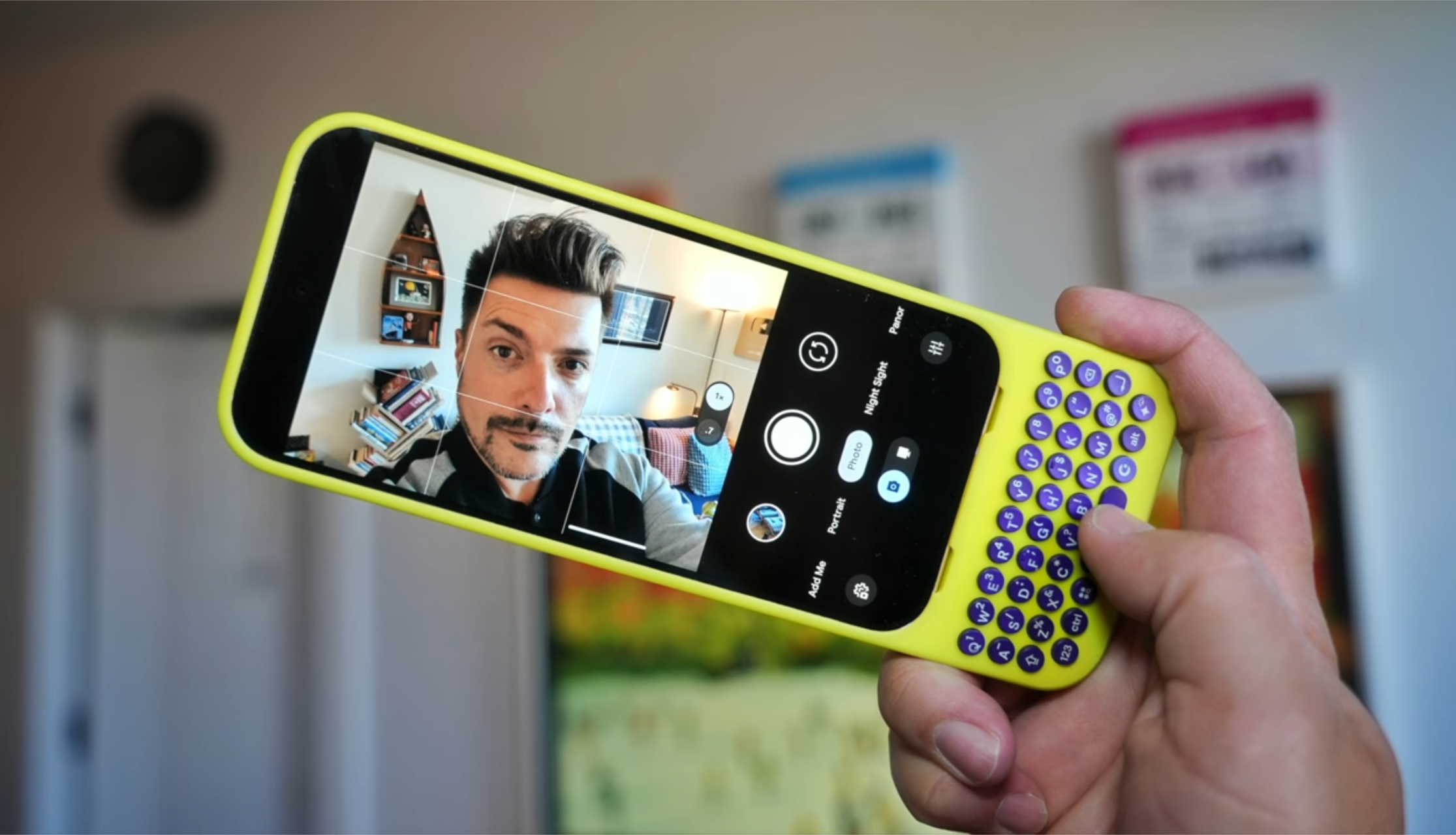Category: Pixel
You are viewing all posts from this category, beginning with the most recent.
Google Please Do This At Google I/O 🙏🏾
John Gruber provides a genius script for what Google should do at Google I/O 2025:
Presenter: This is a live demo, on my Pixel 9. I need to pick my mom up at the airport and she sent me an email with her flight information. [Invokes Gemini on phone in hand…] Gemini, when is my mom’s flight landing?
Gemini: Your mom’s flight is on time, and arriving at SFO at 11:30.
Presenter: I don’t always remember to add things to my calendar, and so I love that Gemini can help me keep track of plans that I’ve made in casual conversation, like this lunch reservation my mom mentioned in a text. [Invokes Gemini…] What’s our lunch plan?
Gemini: You’re having lunch at Waterbar at 12:30.
Presenter: How long will it take us to get there from the airport?
People have been laying it on thick on Apple for their massive misstep of Apple Intelligence marketing a product that was never ready to sell another product. As John Gruber said in his blog post, Google should do a live demo of the exact thing that Apple said Siri would be able to do in front of a live audience in a live stream to truly prove that Gemini and Google Pixel are great products and a match made in tech heaven.
As John Gruber said, Apple just handed Google a potential marketing gift.
Google's Gemini Transition: A Necessary Step, But Execution is Key
Honestly, I wasn’t sure what Google’s long-term plans were for Assistant. Given their history with sunsetting projects, there was a bit of skepticism. But then came Gemini, and the shift is happening. Let’s see how it unfolds.
Google said in a blog post ‘millions’ of users have transitioned to Gemini. While this is a positive sign, the scale within the broader Android user base is something to consider. The focus on ‘most requested features’ like music and timers highlights the practical aspects of the update. The potential for ‘free-flowing, multimodal conversations’ and ‘deep research’ remains an area of interest. The introduction of features like Gemini 2.0 flash thinking and ‘Memory’ adds to the evolving capabilities of the platform. AI development is complex, and balancing innovation with timely delivery is a challenge.
The AI revolution, sparked by OpenAI, has certainly changed the landscape. While Apple has hinted at contextually intelligent assistants and fumbled so far, Google’s approach with Gemini 2.0, Android, and Gemini Nano suggests a comprehensive strategy. They have the AI capabilities, the software, and the hardware, which is a significant advantage. The timeline for execution is a point of interest. Google’s announcements at I/O, including Project Astra, initially suggested a year-end rollout. The current mid-year update indicates a delay. While delays are common in tech, timely execution is always preferred.
Ultimately, Google’s move to replace Assistant with Gemini is a necessary step in the age of AI. They have the pieces, but the execution will determine their success. If they can deliver on the promise of a truly intelligent and helpful assistant, they could redefine how we interact with our devices. But if they stumble, they risk falling behind in a rapidly evolving market. The next few months will be crucial.
Google's Grand Experiment: From Energy to Ecosystem—A 13-Year Observation
Thirteen years ago, as a GeekSquad Advanced Repair Agent, I saw Chromebooks for what they were: cheap, $200 laptops with a measly 16GB of storage. Thin clients, the IT crowd called them. I called them underwhelming. Many other’s thought the same. Back then, Google’s cloud ambitions manifested as these bare-bones machines—a far cry from the integrated ecosystems I was used to, dominated by Macs and PCs. I knew Google made Android and those software services—Search, Docs, Sheets, Slides—they were fine. But the big picture? I missed it. Google didn’t build hardware like Apple did. To me, they were just… energy. Pure potential, no form. Steve Jobs said computers are a bicycle for the mind. Google was the kinetic energy pushing the bike, not the bike itself. In this analysis, I want to trace Google’s evolution from that pure energy to a company building the bike, the road, the pedals—even the rider.
The shift in my perspective came when I grasped the consumer side of cloud computing—servers, racks, the whole ‘someone else’s computer’ spiel. Suddenly, Chromebooks started to make sense. Cost-effective, they said. All the heavy lifting on Google’s servers, they said. Naïve as I was, I hadn’t yet fully registered Google’s underlying ad-driven empire, the real reason behind the Chromebook push. That revelation led me to a stint as a regional Chromebook rep. A role masquerading as tech, but really, it was sales with a side of jargon. The training retreat? Let’s call it an indoctrination session. The ‘Moonshot Thinking’ video from Google [X]—all inspiration, no product—was the hook. Suddenly, streaming movies and collaborative docs weren’t just features, they were visions. ‘Moonshot thinking,’ I told myself, swallowing the Kool-Aid. Cloud computing, in that moment, seemed revolutionary. I even had ‘office hours’ with Docs project managers, peppering them with questions about real-time collaboration. ‘What if someone pastes the same URL?’ I asked, probably driving them nuts. But I was hooked. Cloud computing, I thought, was the future—or so they wanted me to believe.
That journey, from wide-eyed newbie to… well, slightly less wide-eyed observer, has taught me one thing: Google’s Achilles' heel is execution. They’ve got the vision, the talent, the sheer audacity—but putting it all together? That’s where they stumble. Only in the last three years have they even attempted to wrangle their disparate hardware, software, cloud, and AI efforts into a coherent whole. Too little, too late? Perhaps. Look at the Pixel team: a frantic scramble to catch up, complete with a Jobsian purge of the ‘unpassionate.' Rick Osterloh, a charming and knowledgeable figurehead, no doubt—but is he a ruthless enough leader? That’s the question. He’s managed to corral the Platform and Services division. Yet, the ecosystem still feels… scattered. The Pixel hardware, for all its promise, still reeks of a ‘side project’—a lavish, expensive, and perpetually unfinished side project. The pieces are there, scattered across the table. Can Google finally assemble the puzzle, or will they forever be a company of impressive parts, but no cohesive whole?
After over a decade of observing Google’s trajectory, certain patterns emerge. Chromebooks (bless their budget-friendly hearts), for instance, have settled comfortably into the budget lane: affordable laptops for grade schoolers and retirees. Hardly the ‘sexy’ category Apple’s M-series or those Windows CoPilot ARM machines occupy, is it? Google’s Nest, meanwhile, envisioned ambient computing years ago. Yet, Amazon’s Alexa+ seems to be delivering on that promise while Google’s vision gathers dust. And let’s talk apps: Google’s own, some of the most popular on both Android and iOS, often perform better on iOS. Yes, that’s changing—slowly. And the messaging app graveyard? Overblown, some say. I say, try herding a family group chat through Google’s ever-shifting messaging landscape. Musical chairs, indeed. But, credit where it’s due, Google Messages is finally showing some long-term commitment. Perhaps the ghosts of Hangouts and Allo are finally resting in peace.
The long view, after thirteen years of observing Google’s sprawling ambitions, reveals a complex picture: immense potential, yet a frustrating pattern of fragmented execution. They’ve built impressive pieces—the AI, the cloud, the hardware—but the promised cohesive ecosystem has remained elusive. Whispers of “Pixel Sense,” Google’s rumored answer to true AI integration, offer a glimmer of hope. (And let’s be clear, these are just rumors—I’m not grading on a curve here.) But, after years of watching disjointed efforts, I find myself cautiously optimistic about the direction Rick Osterloh (knowledgeable, and, some might say, charming) and his newly unified Platform and Services division are taking. There’s a sense that, finally, the pieces might be coming together. The vision of a seamlessly integrated Google experience—hardware, software, AI, and cloud—is tantalizingly close. Will they finally deliver? Or will Google continue to be a company of impressive tech demos and unfulfilled promises? Time will tell. But for the first time in a long time, I’m willing to entertain the possibility that Google might just pull it off.
Pixel 10 Leaks
Pixel 10 series leaks are here, brought us by @OnLeaks on behalf of Android Headlines:
The Pixel 10 series will be the first to use the new Tensor G5 which is expected to be manufactured by TSMC. Google had previously been using Samsung Foundry to manufacture their chipsets for Pixel, and it showed. Google had problems with overheating, the processor was pretty slow, and the modem was bad too. However, Google did fix the modem and mostly fixed the overheating issues with the Tensor G4 on the Pixel 9 series.
We are expecting some big gains in terms of performance on the Tensor G5, however, we also have to keep in mind that this chipset is being built specifically for the Pixel. Google is going to prefer AI performance over raw performance.
The Tensor G5 seems to be the main focus on the Pixel 10 this year. Since the external design doesn’t seem to be changing much, besides adding an additional speaker grill to the bottom of the device shown in the CAD renders, internal hardware, performance, and software could be where we get the most refinement. I’m perfectly fine with Google not changing the design this year. If the Pixel 9 is the design they’ll sit on for a couple of year (read as 3), I’m happy with that. Pixel 9 series is beautiful.
However, I had a conversation with one of my IRL friends about some nice things Google should add to the Pixel 10. I’d welcome all of them as long as it doesn’t raise the price by much. Maybe $50 would let me depart with my hard-earned money. Anything north of that, I might be holding onto my Pixel 9 Pro.
Google Store Oakbrook Customer Service
A fellow Pixel Superfan had a great experience at the Oakbrook Google Store and he thought he’d share:
Just thought it worth sharing, my mom’s
Pixel 7awas having battery issues, I did a chat with support where they told me it wasn’t under warranty, went to the store and they did a special warranty replacement given the battery issues that you can find all over the web. 2 hrs later resolved. Especially great considering she got this phone on my family’sFiplan with a promo that is still on going for2yrs.While there they also fixed my charging issue on my
Pixel 5by using effectively a dentist/surgical pick to pull the pile of lint out.Just thought the good service was worth sharing with the community. ❤️
It’s nice hearing success stories like this. Especially when the Google Store employees go above and beyond what is even asked of them. I hear this happens a lot. It makes people want to go into the store’s instead of dealing with a contractor online. Still, Google’s been doing a much better job at resolving issues at third-party repair shops as well.
Well, here are the iPhone 17 Air and iPhone 17 Pro Max courtesy of leaker Majin Buu in collaboration with PhoneArena.com
I can’t wait to see Google Pixel’s “Best Phones Forever” episodes after this iPhone release, because these look awfully familiar 😁
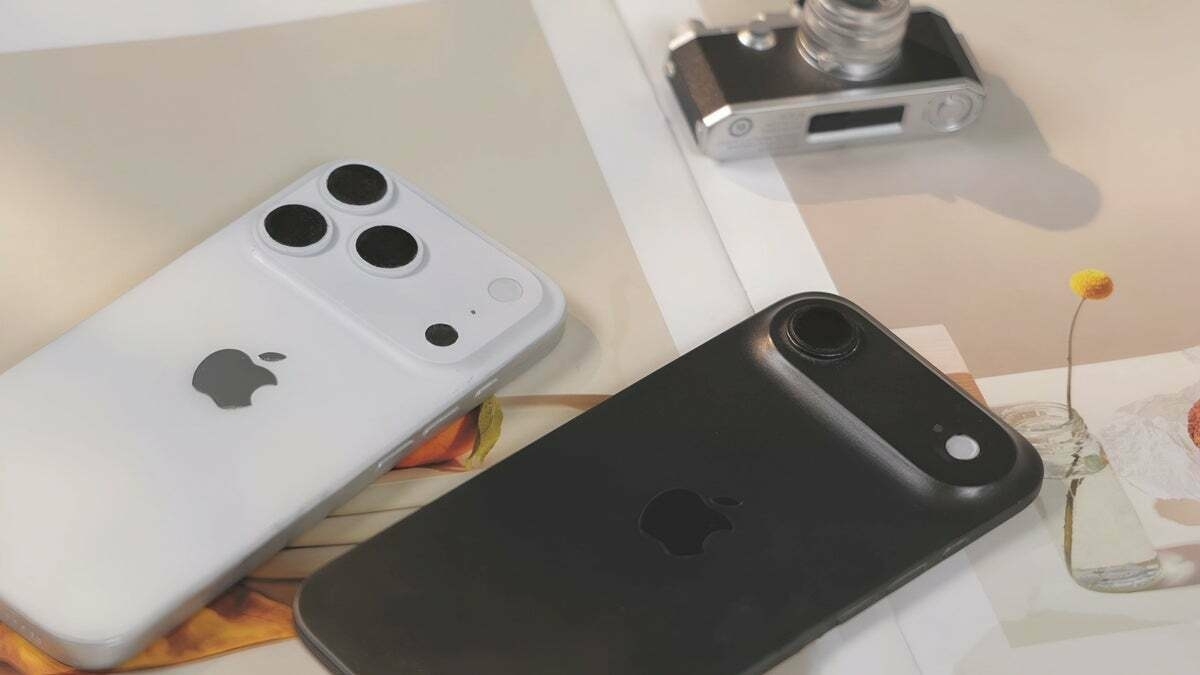
Mark Gurman Exposes Apple Intelligence Delay: My Relief and Google's Gain
If I had purchased the iPhone 16 like I had planned on after seeing what Apple teased with Apple Intelligence at WWDC 2024, I’d be furious. Mark Gurman has the scoop on Apple’s upgraded Siri experience and it’s not good:
Apple Inc.’s turmoil in its AI division reached new heights on Friday, with the company delaying promised updates to the Siri digital assistant for the foreseeable future.
Apple said that features introduced last June, including Siri’s ability to tap into a user’s personal information to answer queries and have more precise control over apps, will now be released sometime in “the coming year.” The iPhone maker hadn’t previously set a public deadline for the capabilities, but they were initially planned for the iOS 18.4 software update this April.
Bloomberg News reported on Feb. 14 that Apple was struggling to finish developing the features and the enhancements would be postponed until at least May — when iOS 18.5 is due to arrive. Since then, Apple engineers have been racing to fix a rash of bugs in the project. The work has been unsuccessful, according to people involved in the efforts, and they now believe the features won’t be released until next year at the earliest.
Apple has reached a new low. Expectations are high for Apple because they made their bed by showcasing such a future forward AI experience at their annual WWDC event last year. Honestly, as I wrote that, I realized that’s not even the main issue. This is the main issue…
Apple, with its ‘crack marketing team’ as deemed by Craig Federighi, created this impressive ad. The problem? None of these features exist. The upgraded personal Siri, capable of providing helpful on-device information in a manner similar to Gemini or ChatGPT, is not yet available. I nearly purchased an iPhone 16, hoping this feature would be available by the end of 2024. Unfortunately, it wasn’t, and I’m sure many people, unaware of the feature’s delay, purchased the iPhone 16 expecting these features. Apple is one of the few tech companies that can release a product with delayed features without widespread customer backlash on platforms like Reddit or device returns. Consumers invest significant money in these devices, and I believe they are beginning to realize Apple is not immune to such issues. I used to believe Apple would only announce features ready for immediate and complete delivery. Fool me once, shame on you; fool me twice, shame on me. This time, I avoided being fooled, thanks to Mark Gurman’s reporting on Apple Intelligence.
Just to provide some visual context on the disconnect between Apple marketing and the reality of Apple AI. This TV ad for Apple Intelligence was released 5 months ago. It still cannot do what is shown here. https://t.co/uC2qmHaVpe
— Mark Gurman (markgurman) March 2, 2025
In the meantime, I’m glad I stuck with Team Pixel and I’m looking forward to the continuation of Google’s Gemini advancements and the rumored on-device (Apple Intelligence-esque) “Pixel Sense” and “Pixie”.
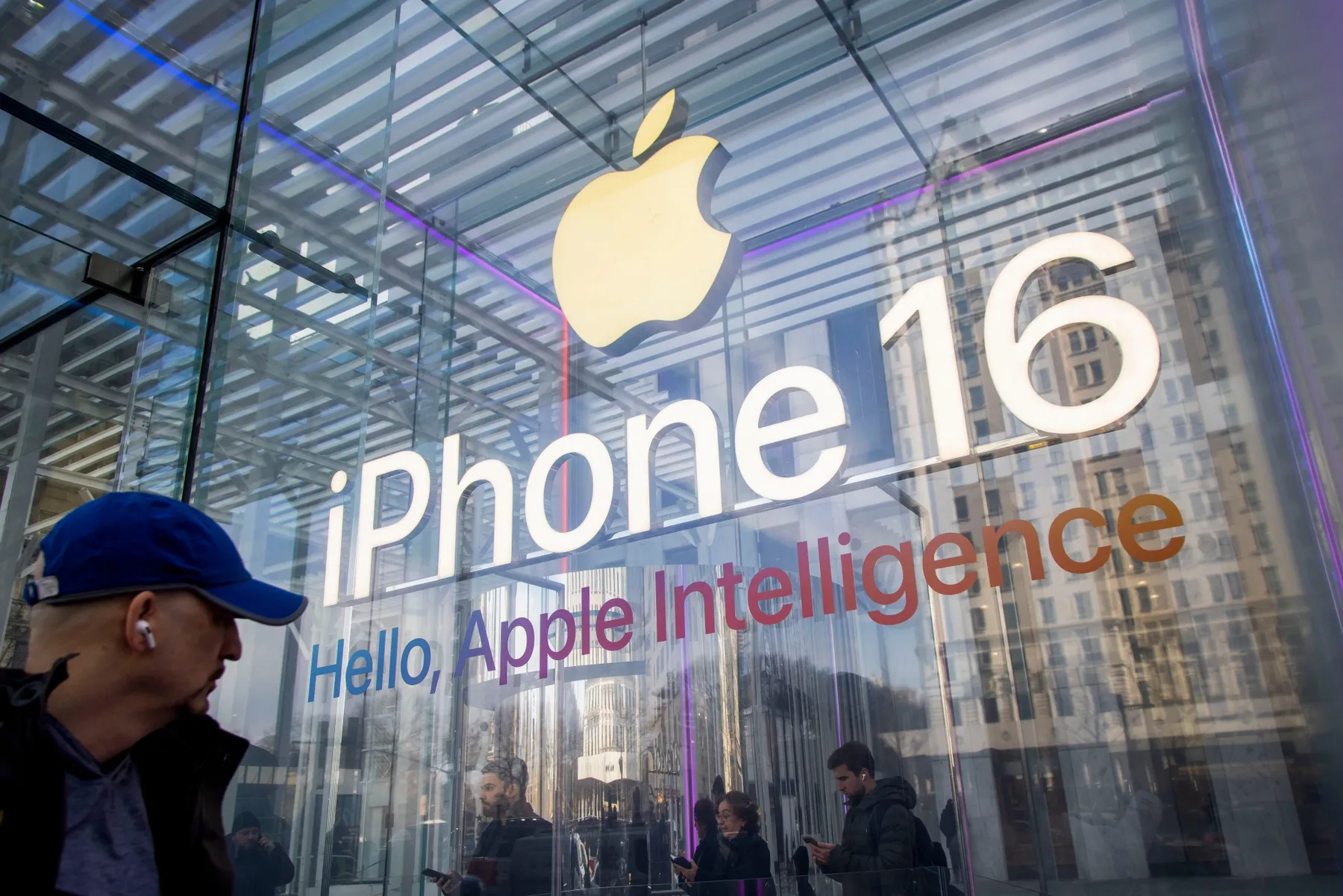
The Human Touch: How Google's Design Got Personal
You know, it’s been really interesting to watch how Google’s design has evolved over the years. They’ve gone from playing it safe to really embracing their own unique style, and it’s made a huge difference in how people experience their products. It’s like they’re constantly trying to find that sweet spot between form and function, and it’s been quite a journey to watch. As Ivy Ross, Google’s Head of Hardware Design, put it:
‘How do you translate the sentiment associated with Google—human, optimistic, bold–into color, texture and form?’ That’s exactly what they’ve been doing, and I think it’s really resonating with people."
I mean, think about those early Pixel phones. They were fine, but they didn’t exactly scream “Google.” But now, with the bold colors, playful accents, and those smooth, organic shapes, you can’t mistake a Google product for anything else. And it’s not just about the looks. Google’s design is all about making technology feel more human, more approachable. Those fabric-covered Nest speakers? They’re like a warm hug for your living room. The Pixel Watch, with its gentle curves and that water-droplet inspiration? It’s like a natural extension of your wrist. And don’t even get me started on the Pixel Buds case – it’s so satisfying to hold, like a perfectly smooth pebble.
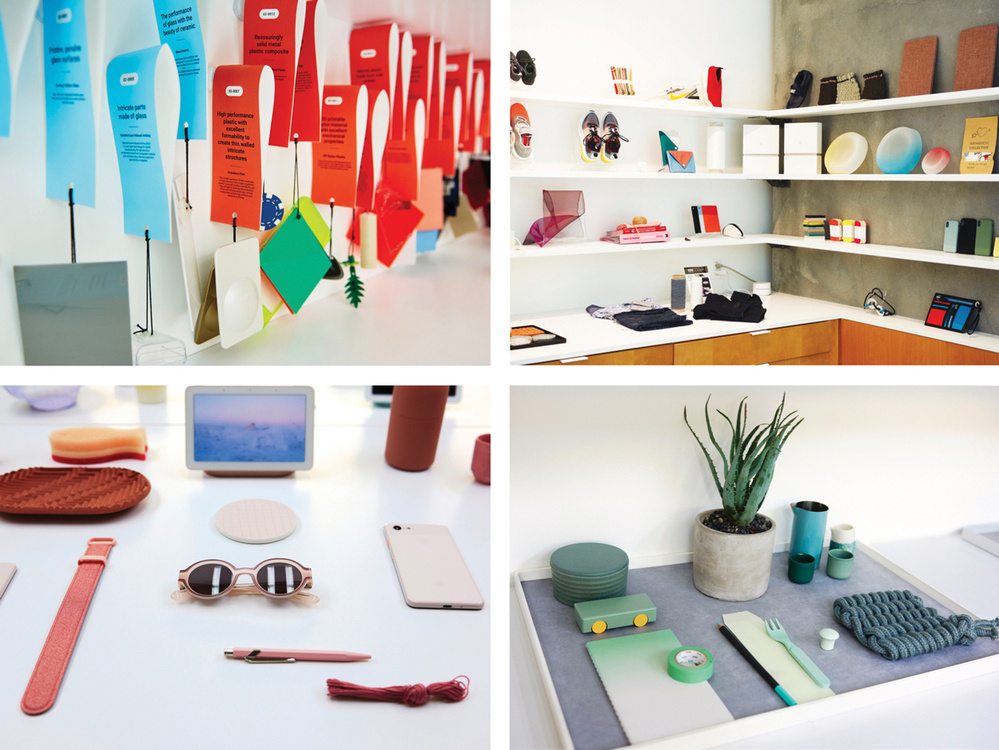
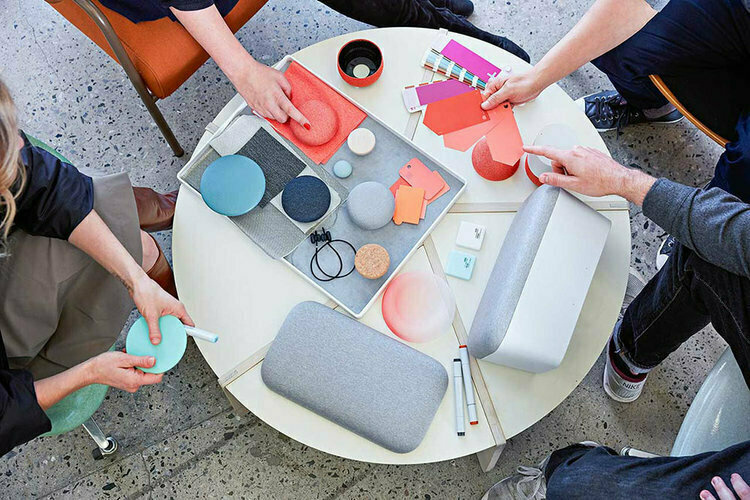
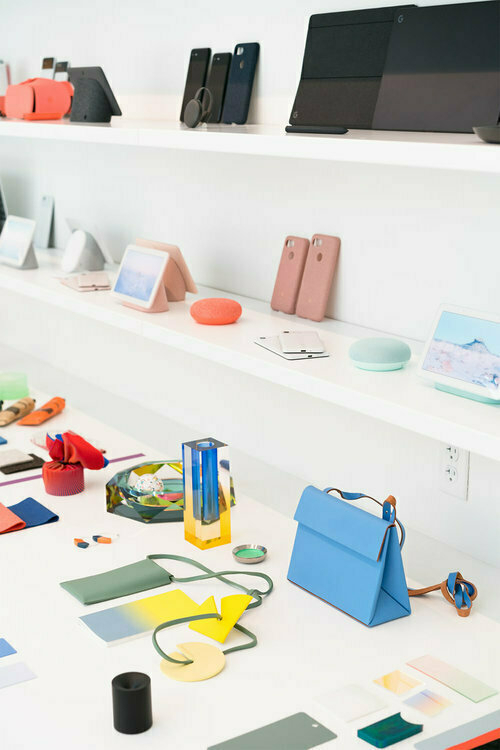

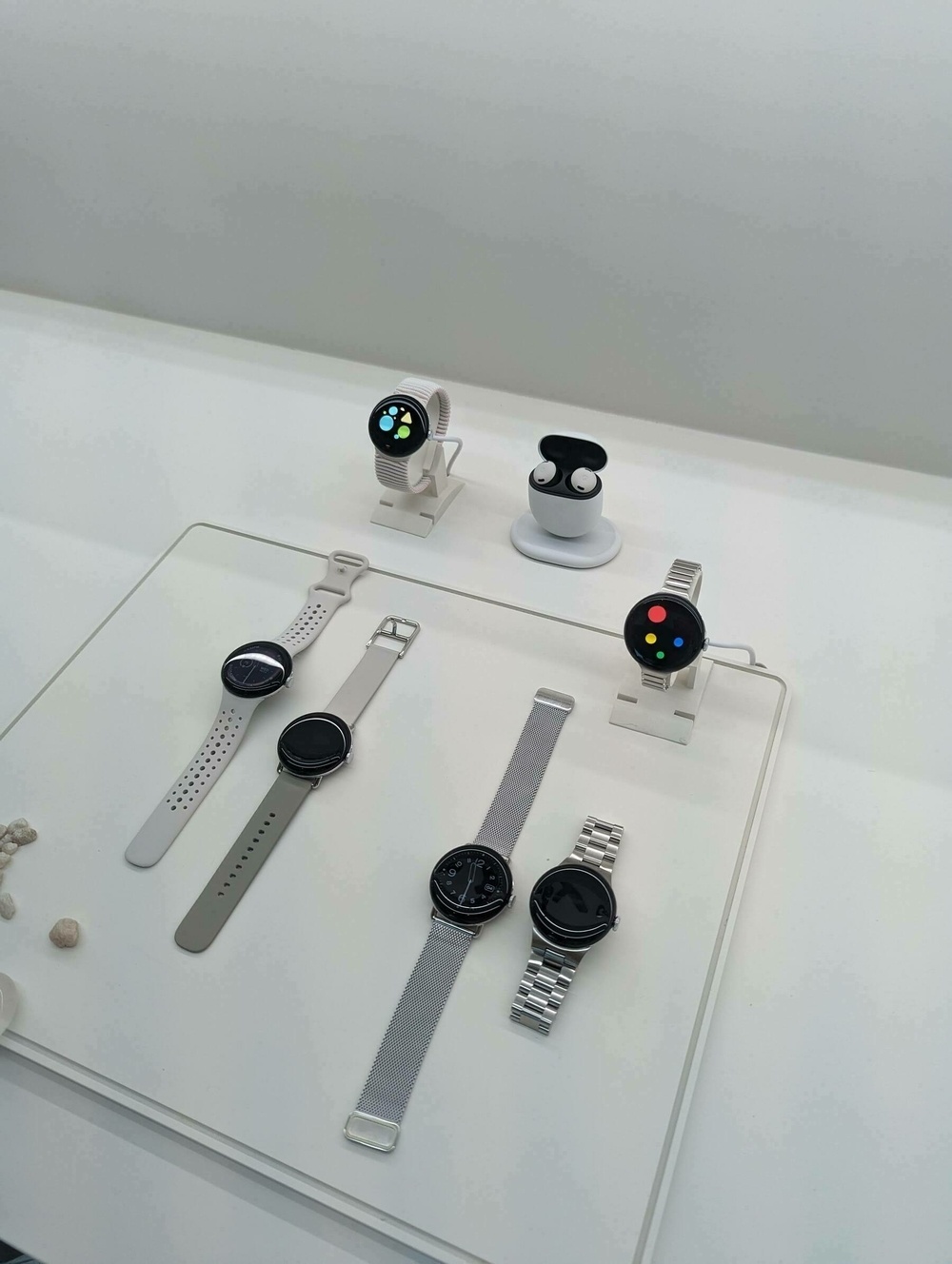
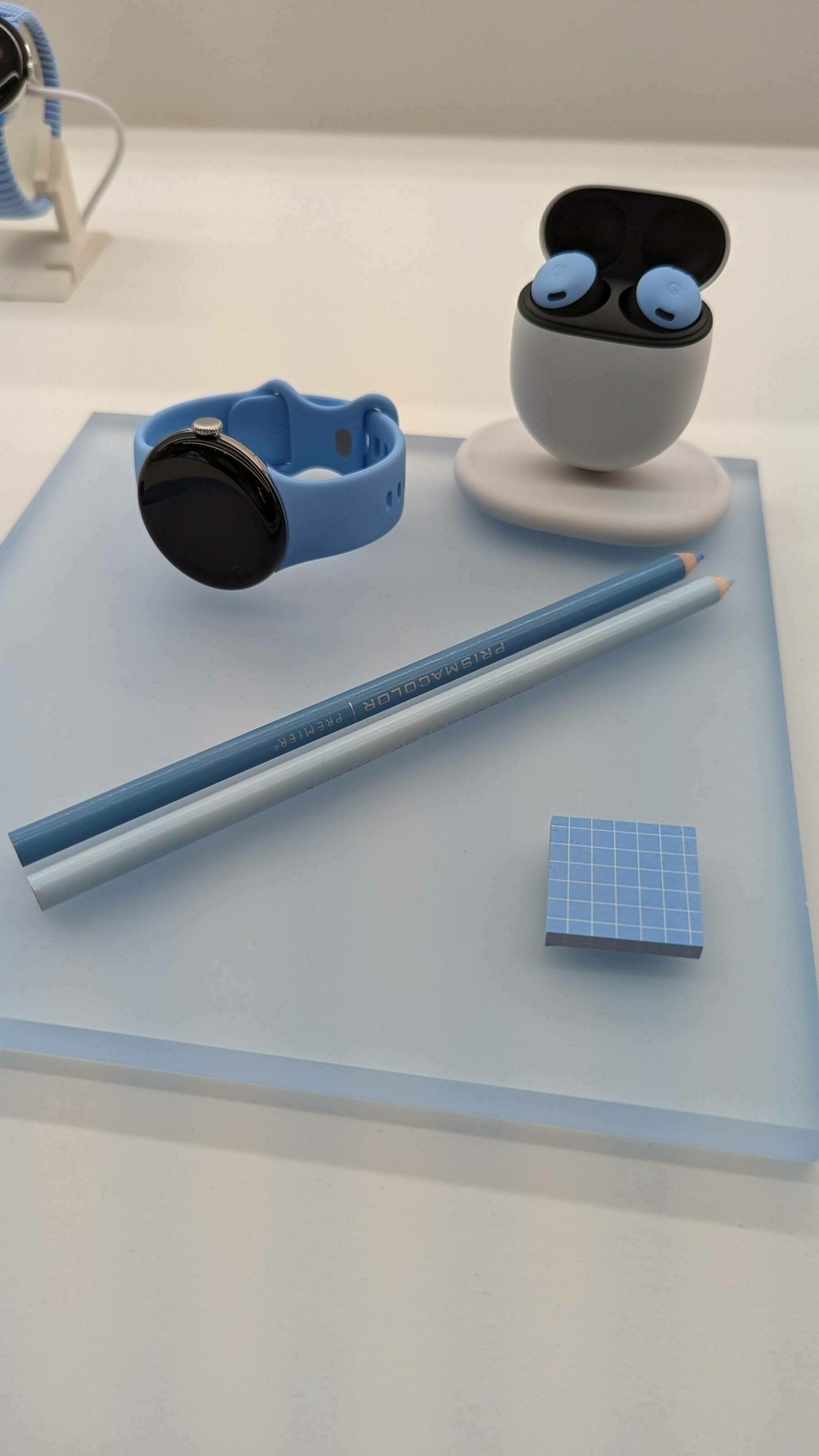
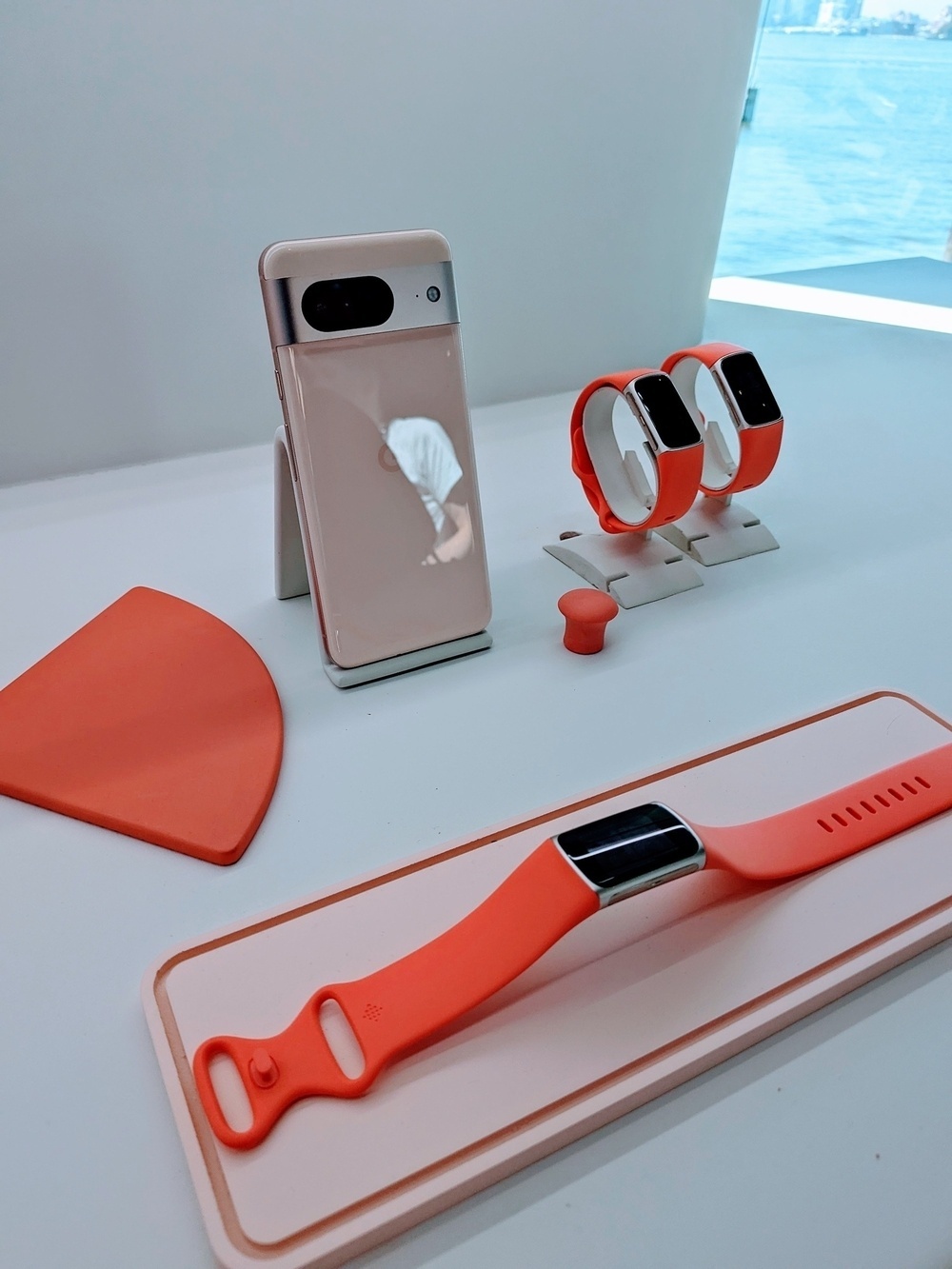
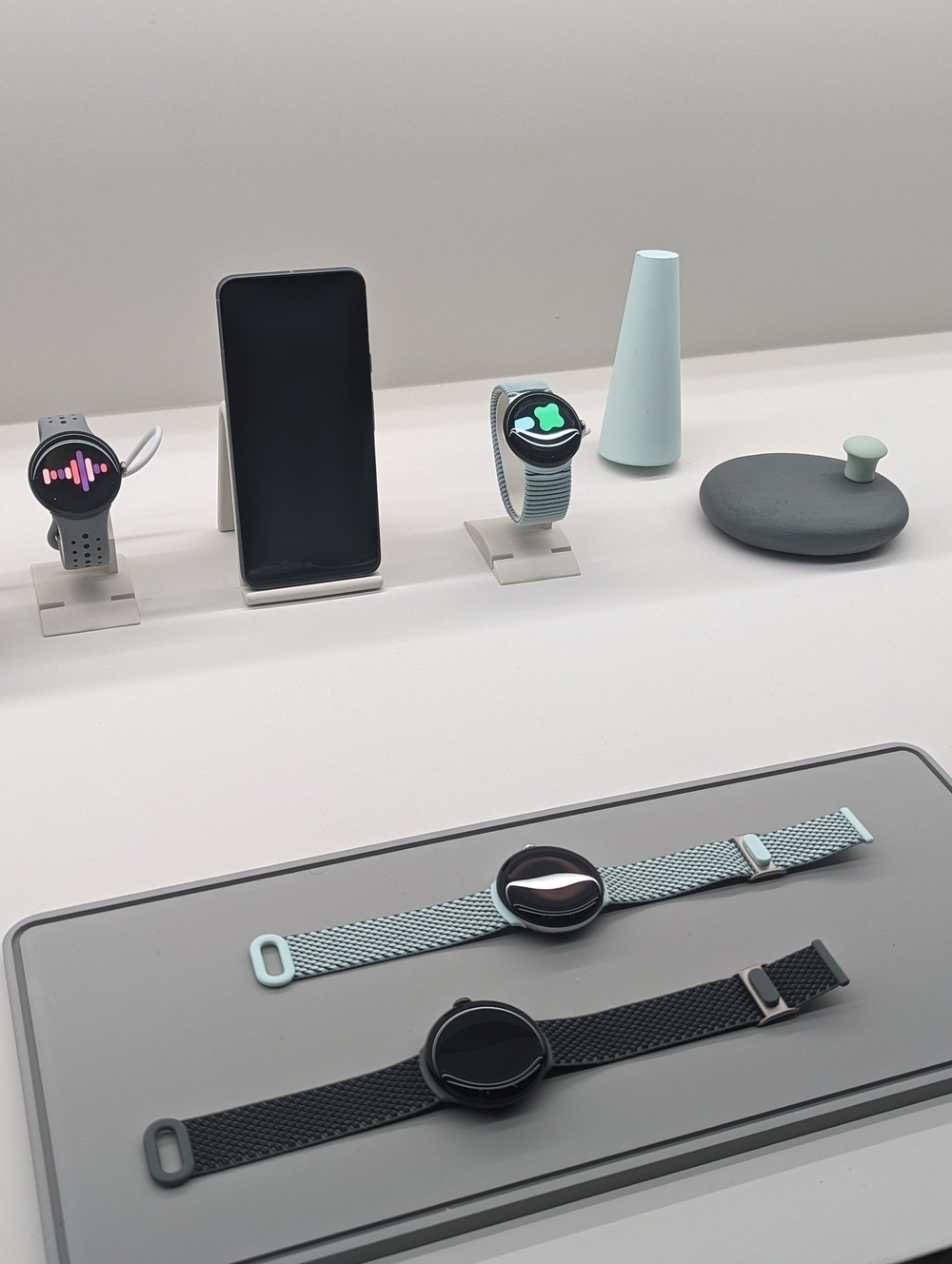
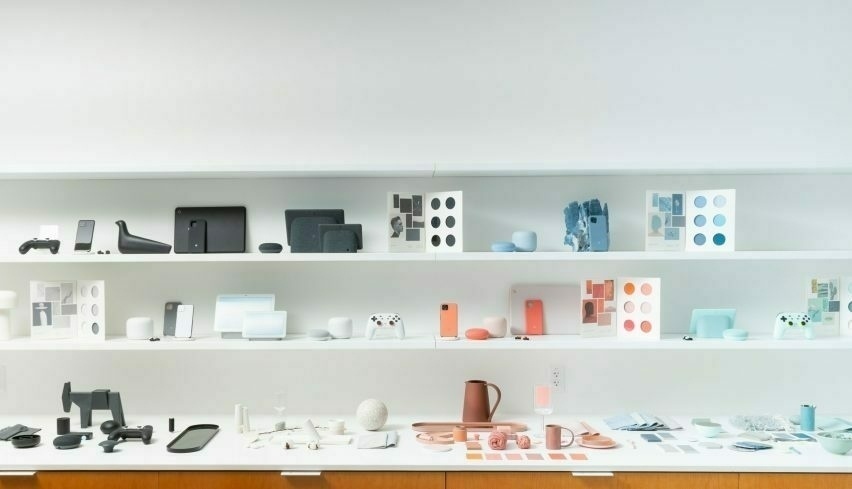
But here’s the thing: Google isn’t just following trends. While other companies are obsessed with making phones as thin as possible, Google’s focused on making them as useful and enjoyable as possible. And you know what? It’s working. The Pixel Pro and the Pixel Fold are proof that you don’t have to sacrifice functionality for style. So what’s next for Google’s design? I think we’ll see them continue to blur the lines between technology and everyday life, creating products that feel less like gadgets and more like natural extensions of ourselves.
And honestly, I can’t wait to see what they come up with next. It’s clear that Google is committed to creating technology that not only serves a purpose but also sparks joy and feels like a natural extension of our lives. That’s a design philosophy I can definitely get behind.
Pixel Superfans had a great time at the exclusive sneak peek of the Google Store in Santa Monica. I wasn’t able to attend the grand opening, but I’m hoping I’ll be able to attend the next one coming to Austin, TX.
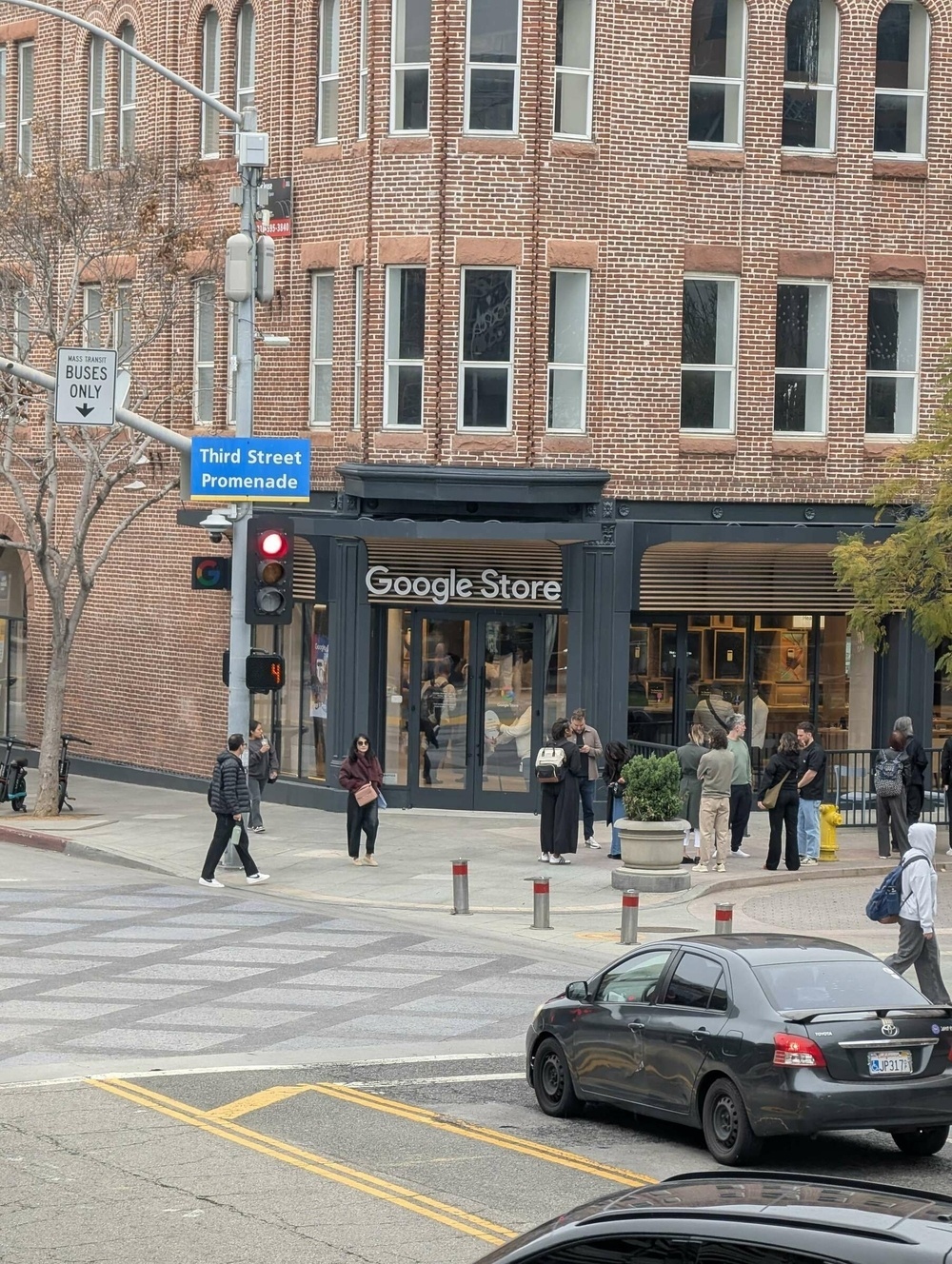
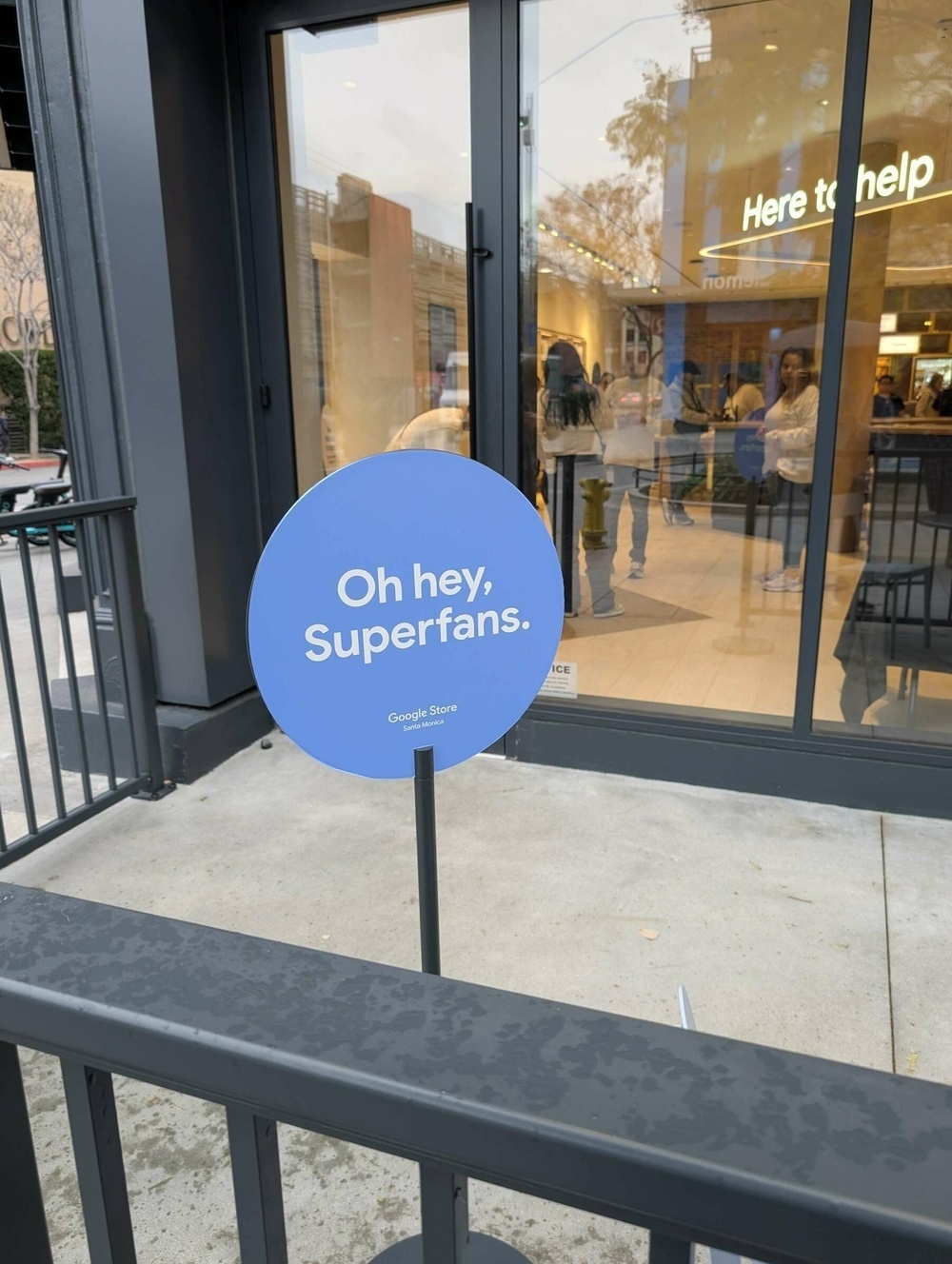
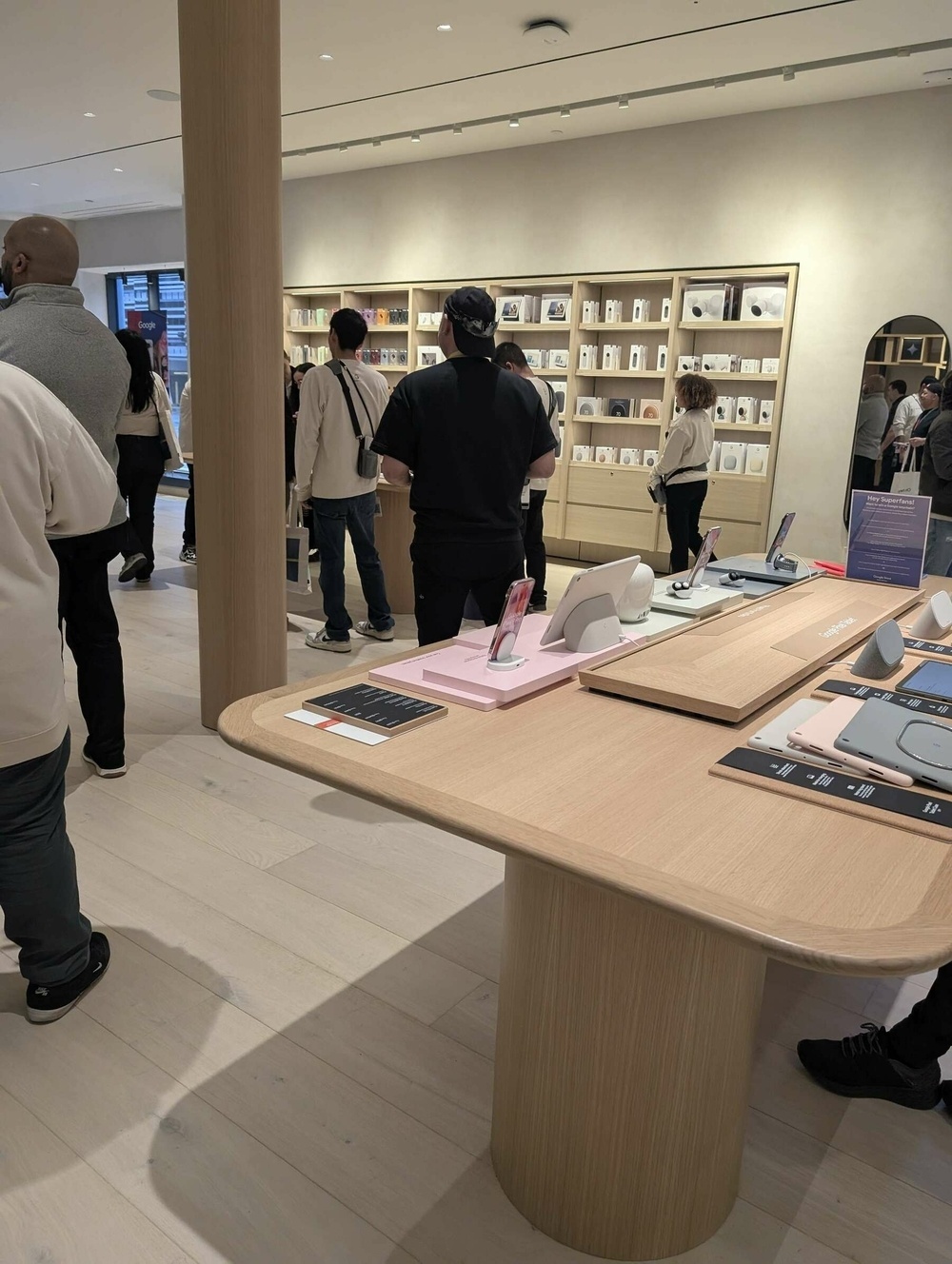
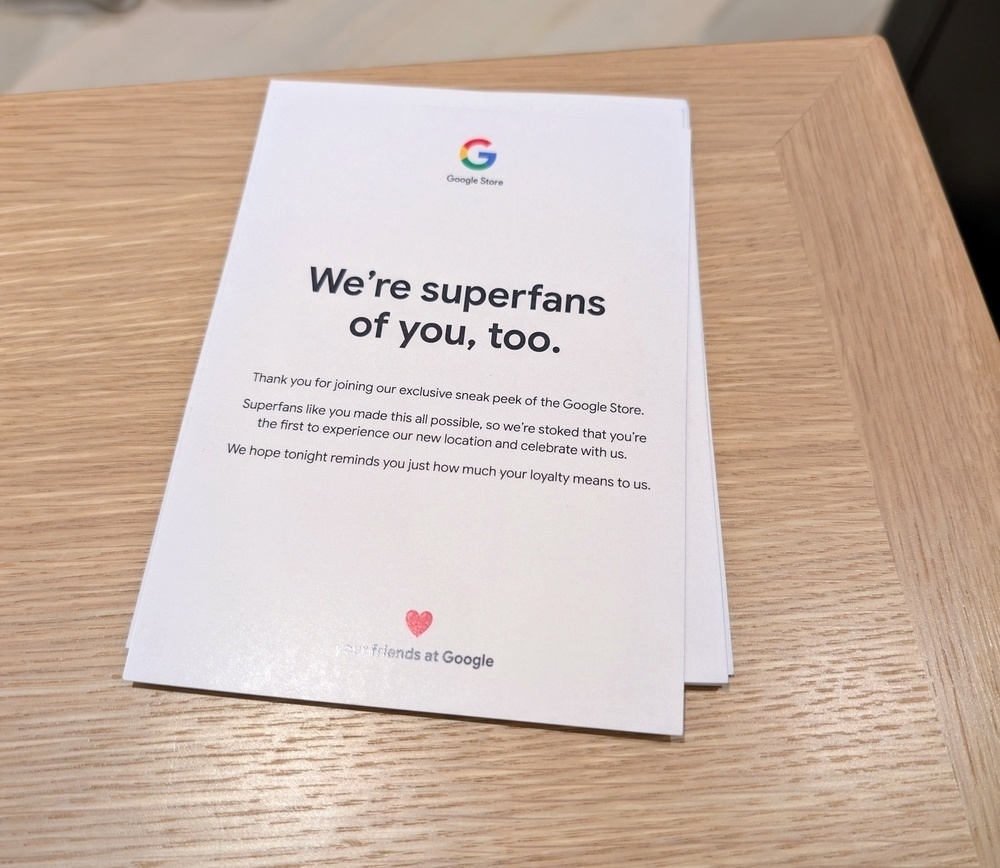
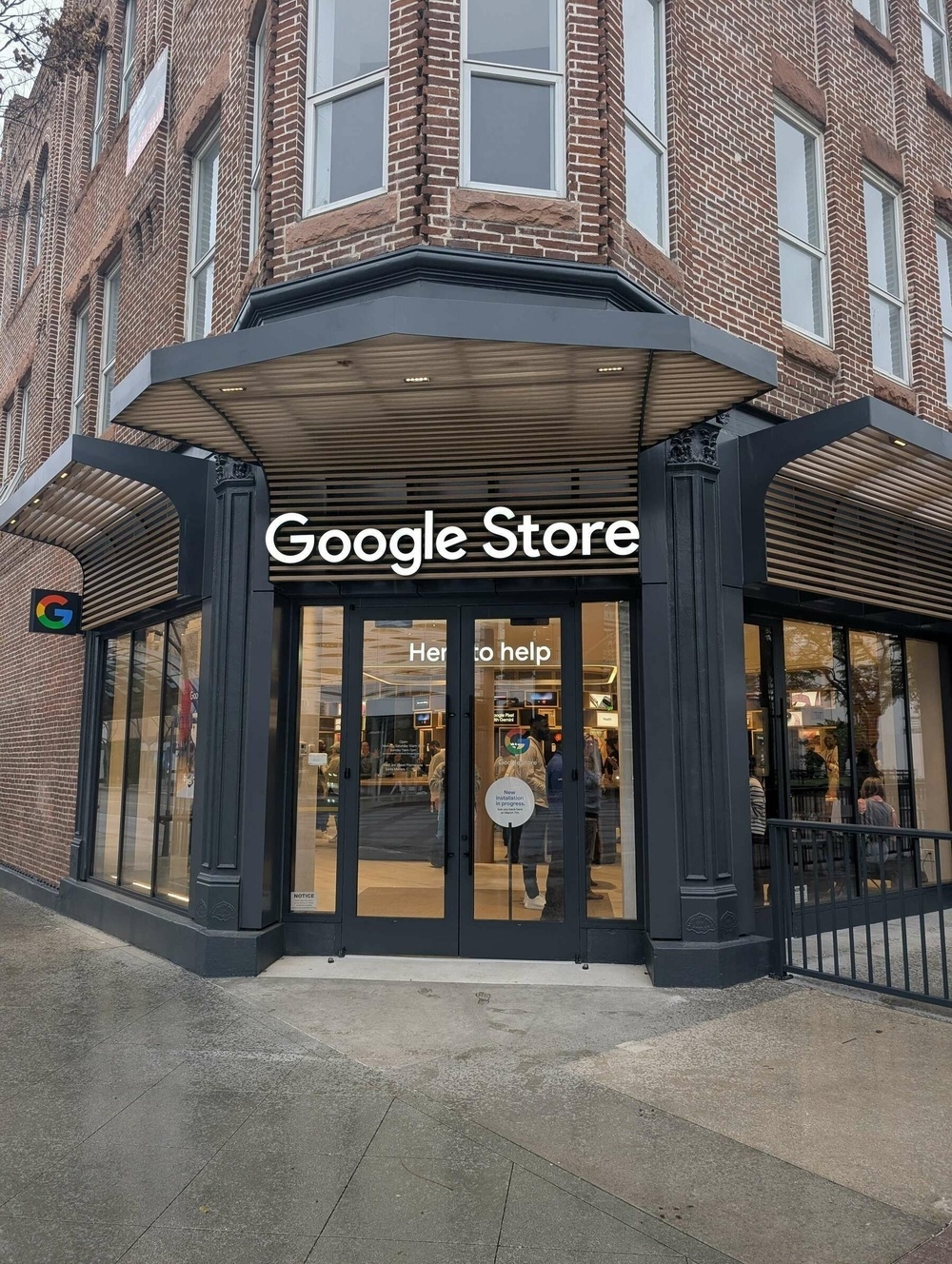
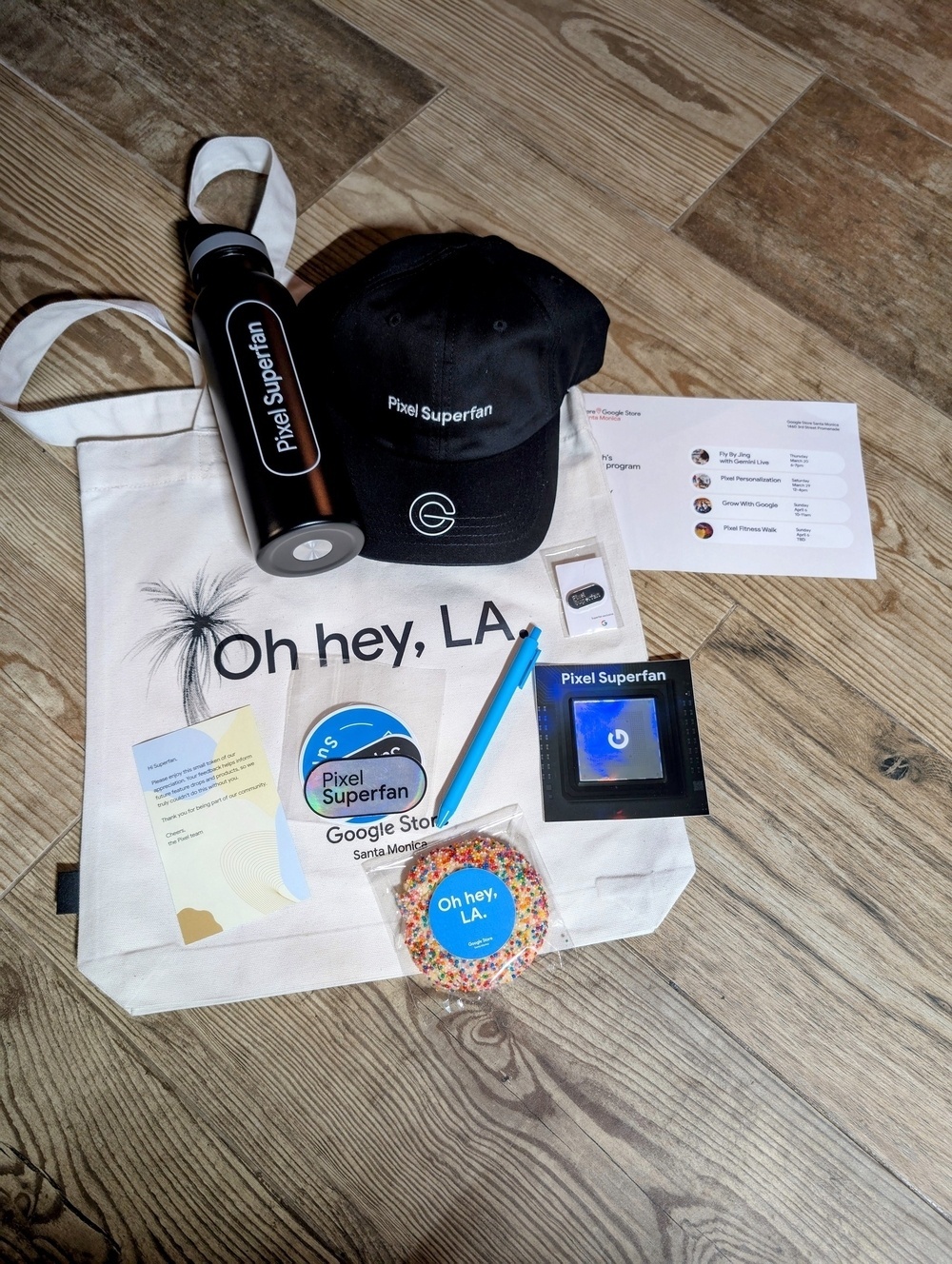
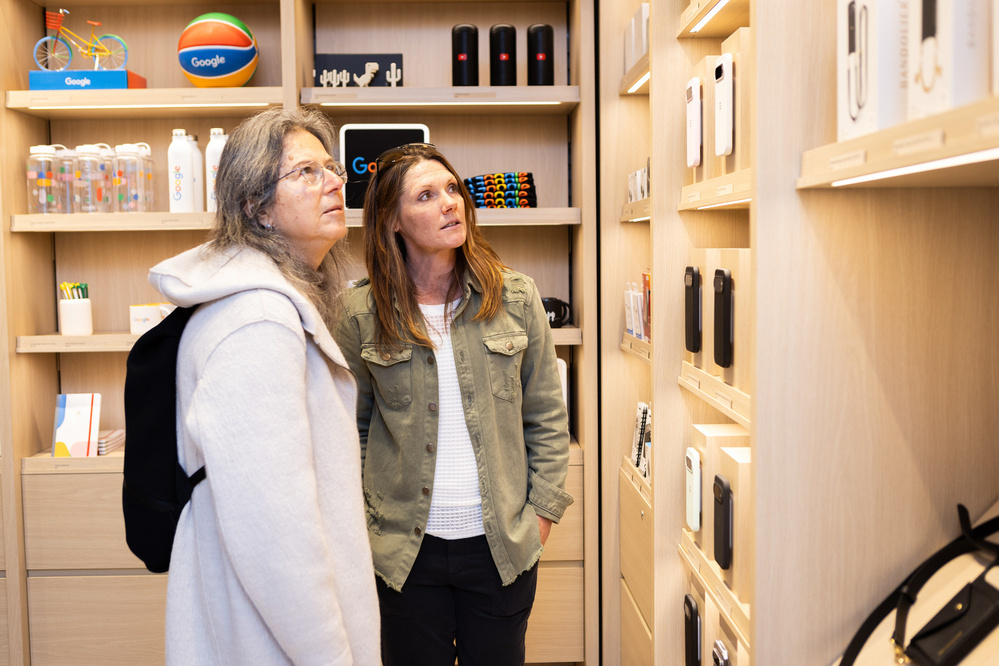
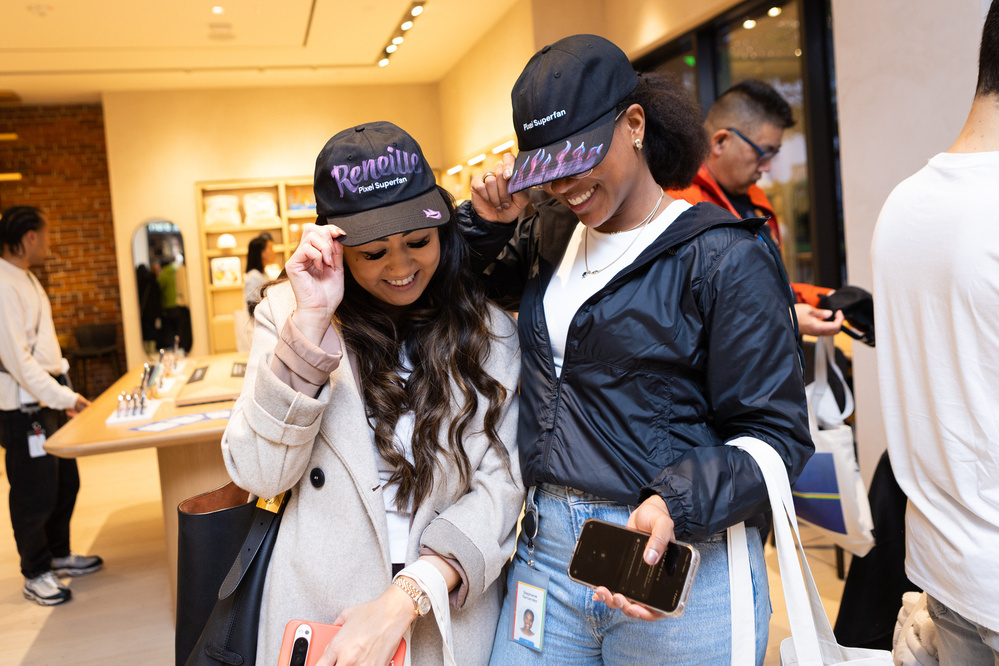
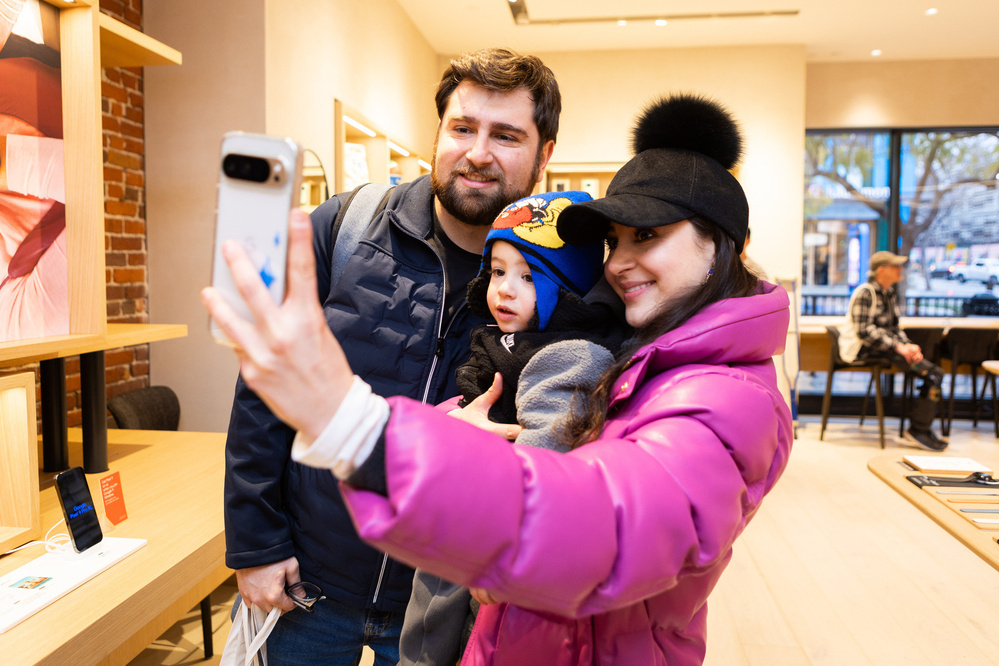
Clicks for Pixel: The Keyboard is Back!
Remember the satisfying click-clack of a physical keyboard? Clicks for Pixel brings it back to your Pixel 9 Pro or Pixel 9!
Jeff, co-founder and CMO of Clicks, shows off this innovative enclosure made of durable thermoplastic or TPU, with a flexible top for easy phone insertion. It features a brushed metal side key, contoured polycarbonate keys with a backlight, and nickel-plated dome switches for that perfect tactile and auditory click.
Available in “Onyx” and the special edition “Surge”, which is a MrMobile exclusive. Jeff exclaims that once the Surge color way sells out, they won’t be making anymore so it sounds like that’s the one to buy. In the video, Jeff shows some of his favorite Android built-in keyboard shortcuts that I cant wait to try when I get my hands on my own.
Mine should be here by April, but I’m hoping to get a few promo codes for you all reading my blog to jump in on this nostalgic keyboard kick.
